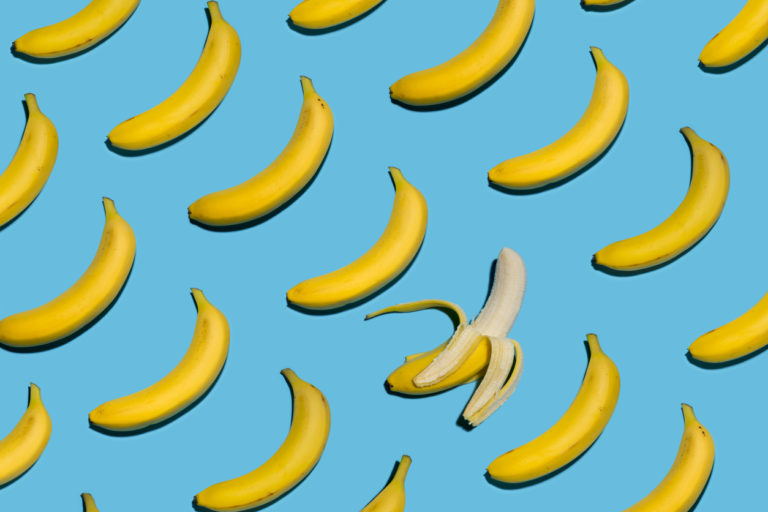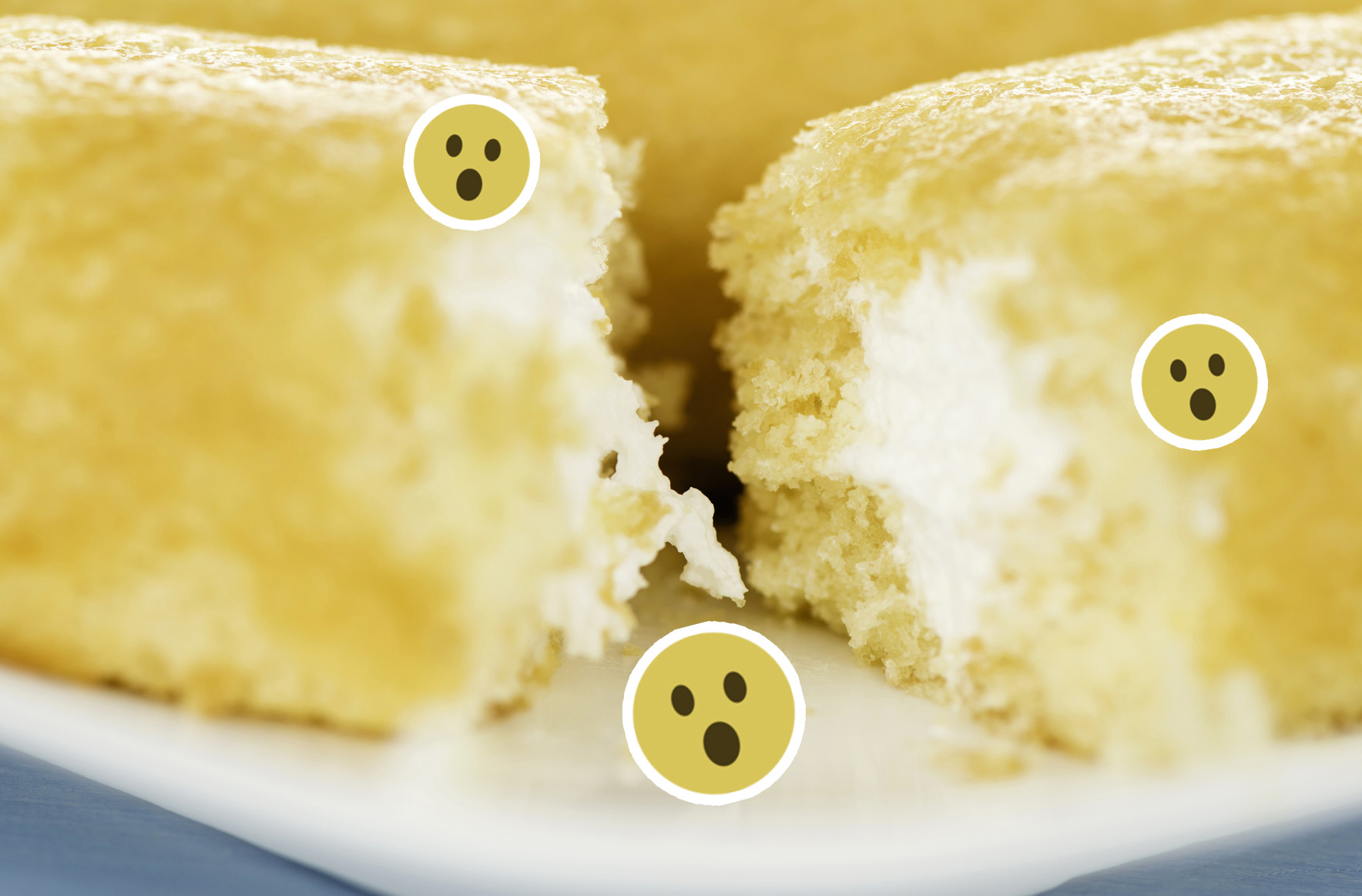They sound like something out of a horror film. But, in truth, genetically modified organisms (GMOs) are basically living organisms whose genetic material has been modified in a lab by genetic engineers. Through this process, humans create plant, animal, bacteria, and viruses that do not occur naturally.
And how do you know if your food has been modified?
At least 64 countries around the world, including Australia, Japan, and every country in the European Union, require genetically modified foods to be labeled. The USDA does not require the labeling of highly-refined ingredients from genetically modified crops. And it does allow manufacturers to disclose the use of GMO at their discretion. In short, you have to do your own research.
But… we’ve been modifying nature for a while now, guys.

People are talking about GMOs more and more, but the issue is hardly a new phenomenon. According to the Genetic Learning Center at the University of Utah, people genetically modified things and tinkered with living organisms for thousands of years. Consider purebred dogs or flower bushes, for example. Food is no different.
Chances are, you’ve definitely eaten lots of altered foods.
Take watermelons without seeds? Humans did that. And non-poisonous tomatoes? That’s an engineered development as well. In fact, the Genetic Learning Center notes, ‘Technology now allows us to transfer genes between organisms.” Scientists might transfer a gene into a tomato, for instance, to keep beetles from eating the plant. Once this plant starts to bloom, it passes the modified gene onto its next generation. Bet you weren’t doing that in science class.
But are GMO foods safe?

The answers vary.
And some scientists certainly don’t think so. In a Scientific American piece, David Williams, a cellular biologist who specializes in vision, said that messing with the genome of plants could lead to risky occurrences. He noted, “The result… could very well be potentially toxic plants slipping through testing.” If you think that sounds scary, you’re not alone.
The issue probably goes back to money, of course.
In fact, the biologist claims to be among a small cohort of in-depth thinkers who question genetically modifying foods. Apparently, though, that entire field of plant molecular biology is “protecting its interests.” Funding usually comes from companies who sell genetically modified seeds. Consequently, they fund researchers who suggest that GMOs are totally safe.
And there’s a dark underbelly to the GMO world.

According to the Scientific American piece, David Williams claims:
Biologists who point out health or other risks associated with GM crops – who merely report or defend experimental findings that imply there may be risks – find themselves the focus of vicious attacks on their credibility, which leads scientists who see problems with GM foods to keep quiet.
Hmm.
But some experts say GMOs are totally safe and that we’re all bugging out.

After all, we do eat these foods regularly.
According to Robert Goldberg, a plant molecular biologist at the University of California in Los Angeles, the worry is pointless and unfounded. He shared:
In spite of hundreds of millions of genetic experiments involving every type of organism on earth… and people eating billions of meals without a problem, we’ve gone back to being ignorant.
So now, what does non-GMO mean?
And our ancestors ate non-GMOs before the foods were deemed trendy.
You’d be surprised at how many products have been modified today.
According to USA Today, people in the United States nosh on a lot of genetically modified foods. In fact, about 95% of our sugar beets and around 94% of our soybeans are engineered or modified. The corn we eat is about 85% genetically altered.
Take watermelon.
Before modification, everyone’s favorite summer fruit was not all pink.
The banana went through some changes too.
Would you like a banana filled with seeds?
No? We didn’t think so. Today’s bananas are actually a combination of two separate plants, Musa acuminata and Musa balbisiana. They came together to create a seedless fruit that is mushy and yummy and oh-so-good for yogurts and smoothies. Imagine trying to snack on a banana fruit full of seeds.
And carrots were not orange.
They were actually purple.
Plus, they looked kind of creepy. Carrots, our favorite horse snacks, used to be either purple or white. They also had lots of stems. According to historians, the ancient Greeks and Romans grew carrots. But those earlier versions were very thin and looked generally much more earthy. They even had super leafy green stems. You can actually still find the wild carrots today.
Let’s not forget about eggplants.
That distinctive hue isn’t entirely natural.
The wild eggplant used to be white, yellow, and even blue (azure, really). It even came in a bunch of shape and sizes! Yep, some eggplants were even circular. Today’s eggplant is different, though. We know it by its dark purple color and long, thick shape. It’s one of the best foods out there, but it’s been tinkered with!
Corn was way, way weirder before modification.
In fact, wild corn wasn’t really a sought-after food.
It was nearly inedible. Instead of the huge, easy-to-peel corn we have today (which is much larger than it was 9,000 years ago), pre-modified corn was not tasty at all. In fact, it was hard and dry, kind of like a potato. Today’s corn is also way more sugary than wild corn from eras past.
The peach wasn’t so great either.
It didn’t taste as sweet and it looked rather like a bean.
Back in the day, thousands of years ago, peaches were kind of like cherries. They weren’t nearly as fleshy. And some might consider them to be a bit salty, somewhat like a lentil. Today, not so much. Our peaches are much juicier and sweeter. Plus, they are big and fleshy.
Tomatoes were super different, too.
They were actually small and yellow or green. And poisonous!
In fact, they were more like tiny cherry tomatoes than the huge, fire engine red ones we are used to. Though they are thought of as Spanish and Italian, these fruits (they’re not actually veggies!) came from the Aztecs. In fact, back then, people thought the tomato was a “poison apple” because of the lead it contained.
And the soy you eat is modified.
In fact, soy is THE MOST heavily modified food in the U.S.
The soybeans themselves were genetically engineered. Scientists actually did this to improve soy oil, because previously, it was very vulnerable to oxidation (which makes it go bad). Today, our soy is engineered with oleic acid, (basically olive oil). It can also lower cholesterol.
Another not-so-natural food? Squash.
Yep, your zoodles might be modified!
In fact, both squash and zucchini have been genetically altered so that they can fight against viruses. If you buy squash and zucchini that hasn’t been genetically modified, though, you won’t be able to tell the difference. They all look incredibly similar. Not every squash or zucchini has been modified, though.
In the end, you decide whether you want to eat GMOs or not.

The pros and cons of them should be further explored.
You can visit the NON-GMO Project to learn more about the foods that are genetically altered. You can also learn where to find foods that are in their natural states. Just don’t forget about the research that suggests GMOs are just fine for human consumption.
Whether you like food made in a lab or not is entirely up to you. They sure do taste good, but it’s all a matter of preference! Those ancient watermelons sure do seem like a lot of work to eat… but hey, they’re all-natural.








